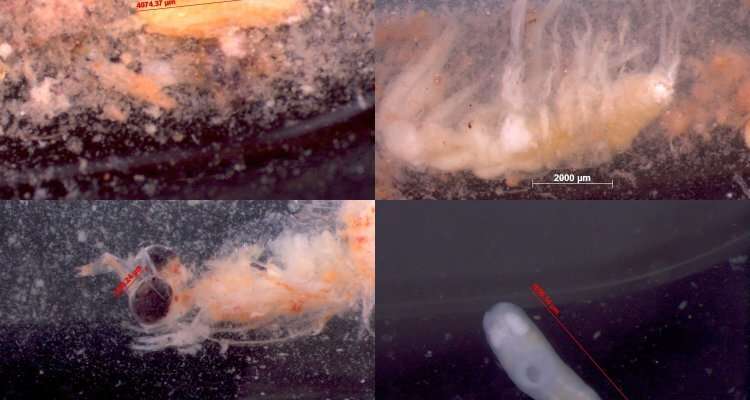Combination microscopy and DNA analysis reveals new insights into the diet of polar cod

Polar cod is an important part of the food web of the Arctic. Sarah Maes (KU Leuven) and Fokje Schaafsma (Wageningen Marine Research) investigated the diet of polar cod from the Barents Sea, with the help of colleagues from the KU Leuven and the Alfred Wegener Institute. They did this by combining traditional microscopy with DNA analysis. The study resulted in new insights regarding the diet of polar cod which are now published in the journal Marine Ecology Progress Series.
Diet investigations are usually done by opening the stomach and looking what is inside, using a microscope when the investigated animal is small. This way, researchers can see which and how much prey was consumed. However, some prey species are more easily digested than others, leading to a potential biased view on the importance of certain prey species.
Some prey species can even be overlooked altogether. Sarah Maes of the KU Leuven initiated an investigation of the diet of polar cod using DNA analysis to overcome this problem. By combining this method with traditional microscopic analysis results gained from the two different methods could be compared.
Investigating the diet using DNA analysis
The microscopically investigated stomach contents were further analyzed using so-called DNA metabarcoding. DNA from the stomach is "read" and compared with a database containing DNA sequences of many animals from all over the world. This way, prey animals that have been residing in the stomachs of the polar cod become known.
The study showed that, apart from the usual crustacean prey, many polar cod fed on other fish species, likely easy to digest eggs or larvae. This indicates that fish are much more common prey than previously assumed. Another surprising prey type were barnacles. Although these are usually best known for clinging to rocks or ships, they have larvae that float in the water.
Added value of combining methods
DNA analysis showed a wide spectrum of prey species including species that are easy to digest. It also helped to identify prey that are only partly recognizable by microscopy because of digestion, to a species level. In addition, DNA was present of prey species that are usually well visible using microscopy, but which were not seen now. Such prey were thus already completely digested.
This shows that DNA analysis provides information on the diet over a longer period of time, while microscopic analysis provides a snap shot. Combining both methods may thus give insight in recent dietary changes. Some information cannot be obtained by DNA analysis, such as the numbers of a certain prey in the stomach or the developmental stage of a prey species.
However, microscopic analysis of the stomach content does provide such knowledge. Combining both methods is thus useful to gain better knowledge on the importance of a species in the diet and of the functioning of the food web.
Importance of the research
The Arctic region is rapidly changing due to global warming. Many studies already showed that the distributional range of many species in the oceans is expanding northward. Dietary studies provide knowledge on the state of the food web in the Arctic and allow for the monitoring of changes in prey species.
This way, the ability of polar cod to adapt climate warming can be investigated. This information can be further used for making policy regarding nature conservation or fisheries. The study, furthermore, shows which information can be gained from the various methods and how these can be used together.
More information: SM Maes et al, Comparative visual and DNA-based diet assessment extends the prey spectrum of polar cod Boreogadus saida, Marine Ecology Progress Series (2022). DOI: 10.3354/meps14145
Journal information: Marine Ecology Progress Series
Provided by Wageningen University





















